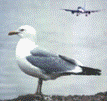Bird Strike Committee Proceedings

Bird Strike Committee-USA/Canada Joint Annual Meeting: 8th (2006)
Date of this Version
August 2006
Document Type
Article
Abstract
The city of Conway Arkansas has proposed a replacement for its existing airport with a larger, more modern facility. Site selection and architectural design began eleven years ago with a preferred location selected near the Arkansas River. After nearly completing the architectural plans for construction, preliminary approval was granted from the FAA regional office pending final coordination from their headquarters. The FAA asked their Staff Wildlife Biologist to evaluate and endorse the proposed location. Concerns over local land uses and the proximity to a potential major flyway led the FAA to withhold support for the site pending further study. The city would need to demonstrate that potential bird and other wildlife hazards at the location did not exceed background levels in the region, though there is no standard method to do so. Preliminary ground-based observations by a consultant seemed to support the claims by local experts that birds did not present hazards warranting selection of a new site. The FAA requested and funded an extensive study to determine if these preliminary results could be further supported by more scientific analyses. Use of NEXRAD radar data and the US Bird Avoidance Model supported the preliminary findings that birds may not use the area as a major migratory path or in unusual local movements. A dedicated mobile bird detection radar was installed at the site and sample ground-based observations were conducted to monitor the location around-the-clock for a full year. Results indicated that the site did not exceed and frequently had less bird activity than other potential locations in a large area surrounding the city. The FAA Staff Wildlife Biologist’s recommendation will be based partly on these findings. The significance of this project is that for the first time, remote sensing technology combined with ground-based data collection methodology were used to comparatively quantify the potential bird hazards in an airport site selection process. Such projects may become a benchmark for other proposed actions and help clarify ill-defined standards for proponents of new airports or airport expansion projects seeking to meet FAA requirements.

